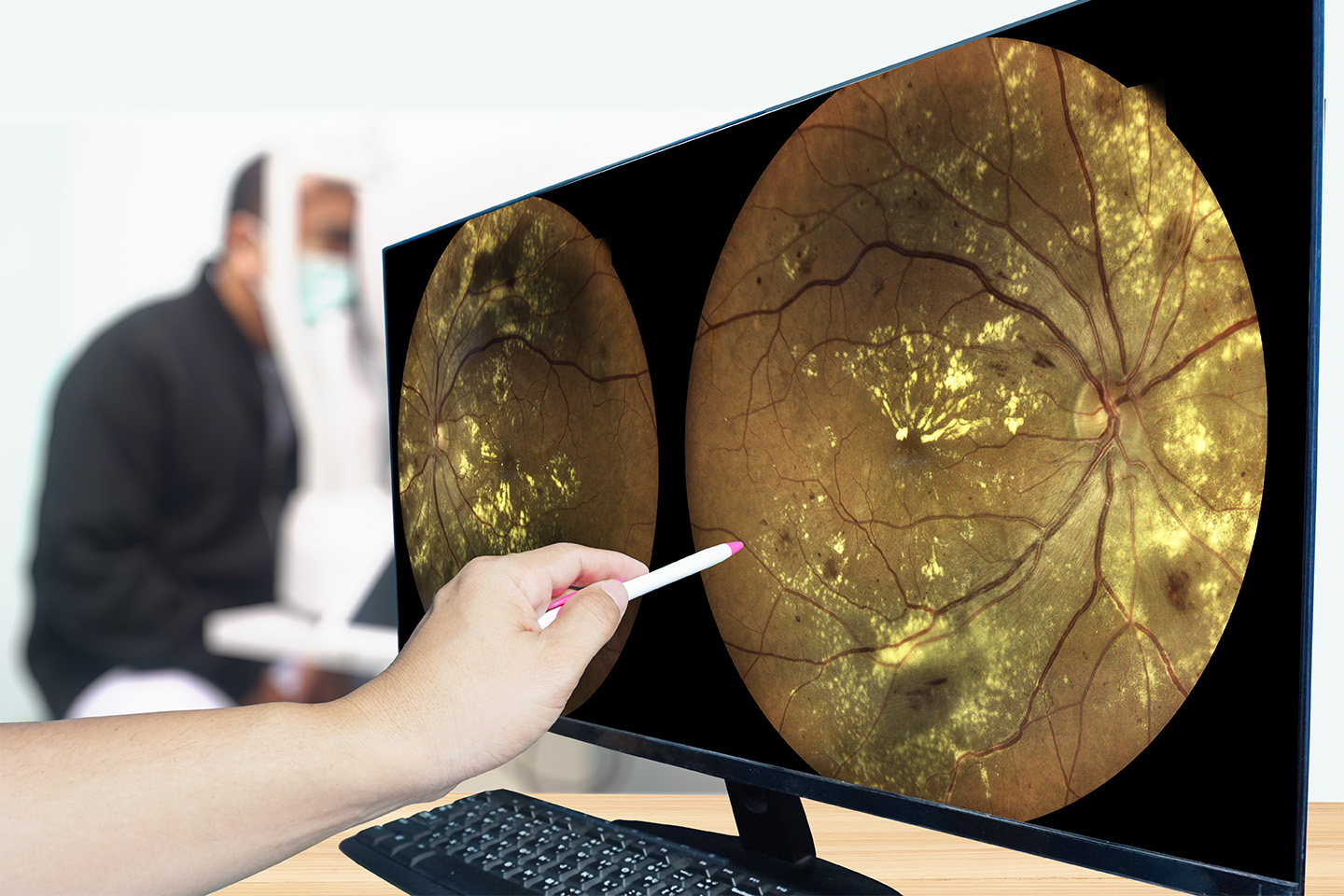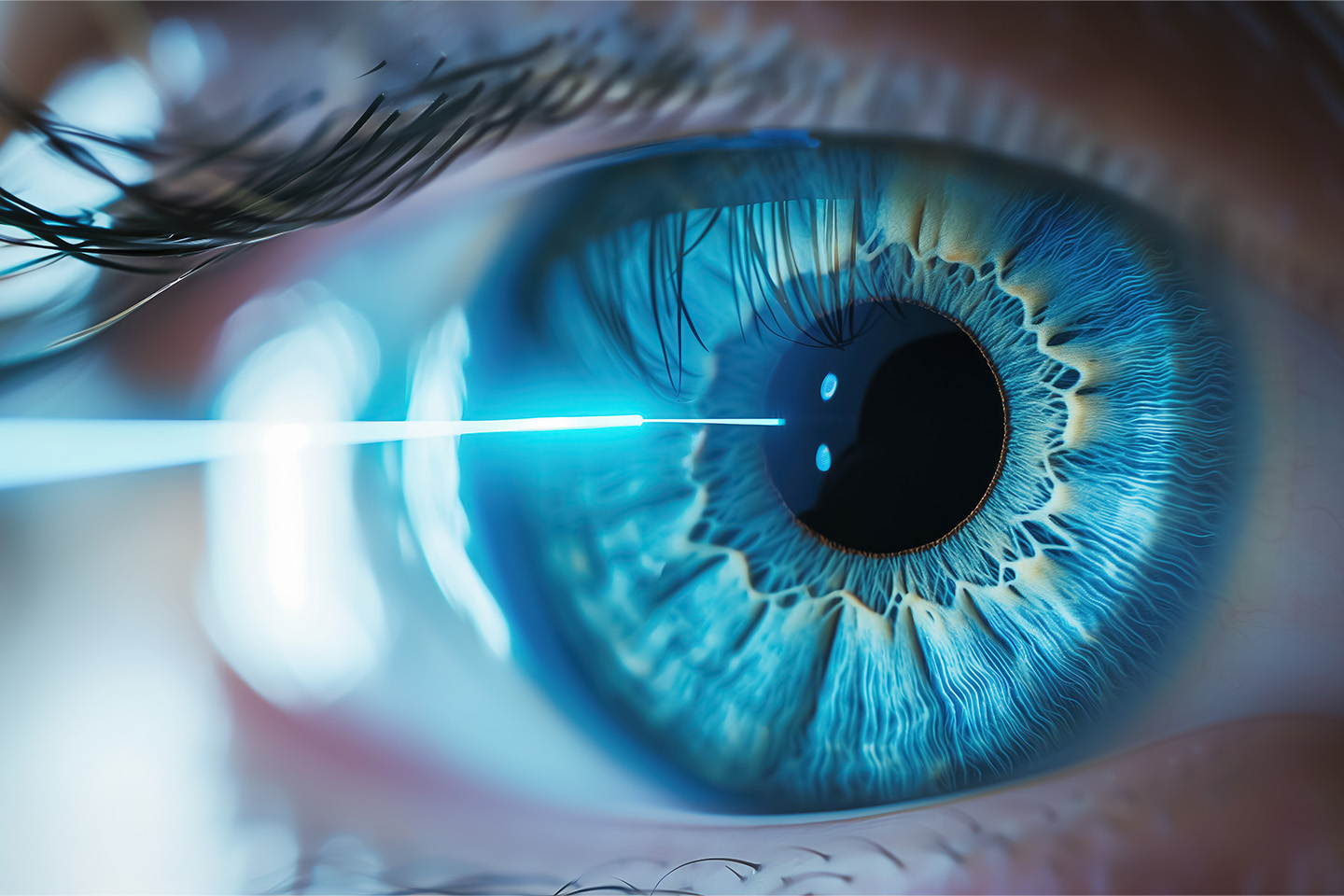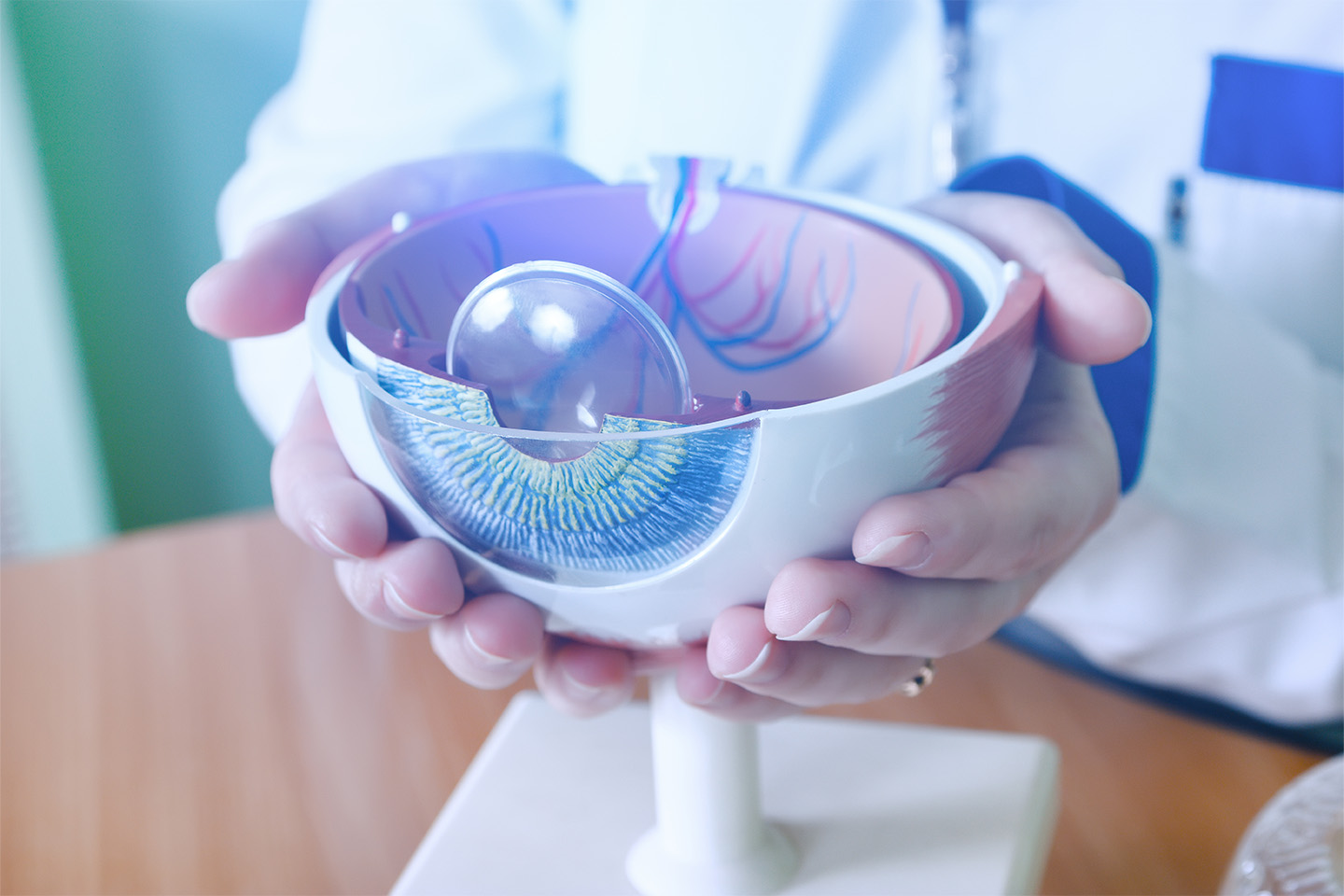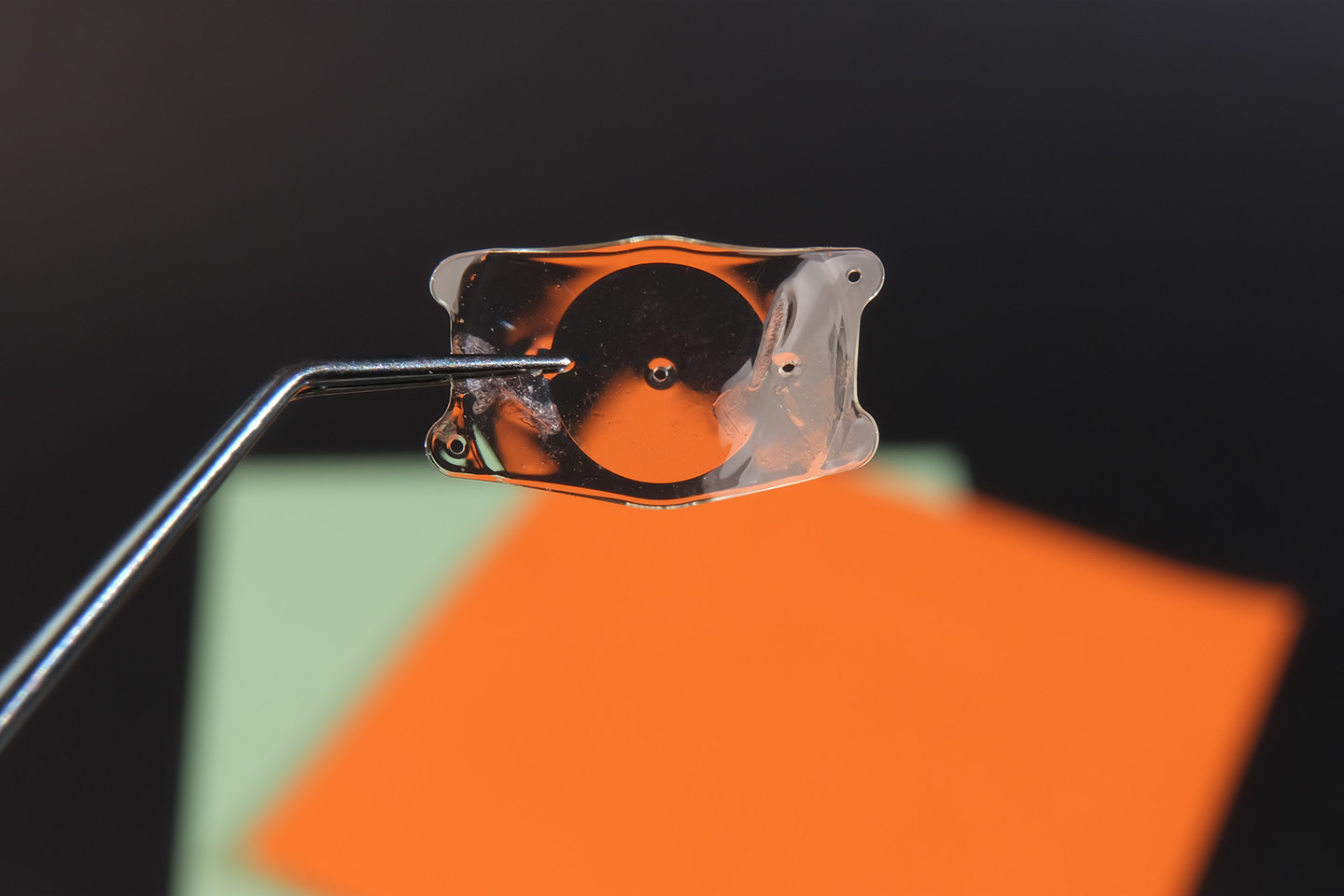Blepharoplasty

Blepharoplasty eyelid surgery is a procedure that is performed by a surgeon who specializes in eye and face surgery to remove excess skin and fat on and underneath the eyelids which leads to sagging or drooping of the lids. It is done on the upper and/or lower eyelid depending on the needs of the patient. Blepharoplasty eyelid surgery can have a medical purpose and can be only for cosmetic purposes. The medical purpose is usually the result of drooping eyelids that impair vision. The cosmetic purpose is the same as most cosmetic surgery reasons which are to look younger.
Eyelids and Aging
There are a number of changes that occur in the eyelids over time. These changes are mainly age-related although some people may also have a genetic predisposition to drooping eyelids.
The eyelids are primarily composed of skin which gradually loses its normal youthful elasticity over time. The constant pull of gravity causes the skin to stretch to a point that there is excess skin.
The fat which lies around the eyeball and protects it may also be involved in the stretching and drooping. Normally this fat is held in place by a thin membrane and is there to cushion the eyeball against any shock. However, with age, the membrane may weaken and the underlying fat then bulges. It may further push against the already hanging eyelid skin to exacerbate the problem.
The excess skin hangs over the upper eyelid and leads to puffiness or bags to form on the lower eyelids. As a result, the sagging eyelids cause the eyes to have a droopy appearance. Blepharoplasty eyelid surgery can correct this by removing and tightening the excess skin. It is therefore commonly referred to as an eyelid lift.
Blepharoplasty Costs
The cost of blepharoplasty can vary depending on a number of factors. Currently at ICON the surgeon’s fees for performing a blepharoplasty range from around $2,000 to $5,000. Lower fees are for simpler procedures where only the upper eyelid is lifted without any underlying fat being removed.
A complete blepharoplasty where both upper and lower eyelids on either side are operated upon and some protruding fat is also removed tends to cost significantly more. Should the procedure be done for vision-related problems (functional blepharoplasty) then it may be covered by your health insurance.
Blepharoplasty Recovery
Pain and swelling can be expected after the surgery but if there are no complications then it will subside in just a few days. The first 72 hours is crucial; the way the wound is cared for, as well as other measures, can determine whether the recovery will be fast or not. Full recovery can take as long as 6 weeks, although most patients will find that almost all discomfort has resolved by the third week of recovery.
It is vital to follow the attending surgeon’s instructions closely. Postoperative care is largely in the hands of the patient since a blepharoplasty does not usually require overnight hospital stays. A topical antibiotic (usually an ointment) will prevent infections to the surgical wound and should be used exactly as directed.
Cold therapy can help in reducing the postoperative pain and swelling. Ice packs should be used with gentle pressure but ice itself should never be applied directly to the skin or wound. The frequency and duration of the application of cold therapy will be determined by the doctor. After 48 to 72 hours of cold therapy, heat in the form of warm compresses may then be used to aid in healing.
These simple measures can make the difference between a fast and optimal recovery or a slow and complicated one. Care has to be taken, especially for patients who are contact lens users. Recovery can be complicated in smokers and people using anti-inflammatory or anti-clotting drugs prior to surgery. Certain herbal and nutritional supplements can also impact blepharoplasty recovery.
Blepharoplasty Risks
As is the case with any surgical procedure, there may be concerns about the risks associated with blepharoplasty. It is largely a safe procedure provided that it is done by a surgeon with the training and experience in the field of cosmetic surgery and more specifically eyelid lifts. However, there are some risks that cannot be overcome even with the most skilled surgeon at hand.
Firstly, there is the risk of a postoperative infection and an adverse reaction to the anesthesia. These are risks that exist with any type of surgery, be it a simple or complicated procedure. Some of the more eye and eyelid-specific risks that should be considered include visual disturbances which are usually temporary, scarring, dry eye syndrome, tear duct injury, damage to the eyelid muscles or nerves and bleeding behind the eyes. The doctor will take the necessary precautions to minimize these risks. However, some risks are more likely to occur if patients are not compliant with pre-operative and post-operative precautions. It is therefore important to get the correct advice about what to do and not do before and after the procedure directly from the attending surgeon.
Blepharoplasty Complications
Complications are the adverse outcomes from performing any surgical procedure. Blepharoplasty complications can be minor or major. There is no guarantee that these complications will occur, or that it can definitely be avoided. In the ideal situation, there are no complications during or after the procedure. With a blepharoplasty being such a simple procedure, complications are not common.
Minor complications include dryness, irritation, and itching of the eyes, prolonged numbness of the eyelids, persistent redness of the eyes, random nerve firings, temporary vision changes like double images and difficulty in closing the eyelids. These are not serious complications but rather the effects of the surgical procedure and anesthesia. It is usually short-lived although some people may experience it for longer than would be expected. Major complications include an allergic reaction to the anesthesia (if needed), severe post-operative infection which spreads to deeper tissue or even throughout the body, protruding of the eyeball, extensive scarring, permanent problems with the eyelid opening or closing mainly due to muscle and nerve damage, injury to the tear ducts that compromise normal tear secretion leading to dryness and corneal abrasion. Sometimes bleeding can occur behind the eye and if not attended to promptly, it can lead to blindness.
It is important to note that blepharoplasty complications are rare. Nevertheless, it is important to be attentive for the earliest signs of complications. Rapid intervention usually helps mitigate the complication from further progression and will reduce the chance of permanent effects or disabilities.
Bilateral Blepharoplasty
The changes that lead to the sagging of the eyelids and puffy bags below the eyes usually occur on both sides of the body. There may be a difference in the severity of the eyelid drooping on one side more than the other. However, the stretching, pulling and bulging of the excess skin usually affects the left and right eyelids to a similar extent.
When both eyelids on either side of the body are operated upon, then it is referred to as bilateral blepharoplasty. The term bilateral simply means on both sides of the body. The procedure may involve either the upper eyelids or both the lower eyelids, or all four eyelids. To reduce the risks associated with multiple surgeries and help ensure a balanced look, both sides may be operated upon in one sitting.
A bilateral upper blepharoplasty is, therefore, more correctly known as an eyelid lift, since these eyelids are literally raised upwards from its current position. Unfortunately, when it comes to the upper eyelids, the effects are not usually permanent. After several years the sagging may return and a forehead lift may then also have to be considered for better results.
The bilateral blepharoplasty should not be confused with the double eyelid surgery, also known as the Asian blepharoplasty. This double eyelid surgery is also a cosmetic procedure but it is intended for creating a crease on the upper eyelid which may be lacking is some people of Asian ethnicity. It is also referred to as the “Westernization of the eyelid”, a term that is sometimes considered controversial as not all recipients may be focusing on a more Caucasian appearance of the upper eyelids.
Lower Eyelid Blepharoplasty
Lower eyelid blepharoplasty is a procedure conducted on the lower eyelids only, and usually on both sides during the surgery. It may be included with the upper eyelid blepharoplasty and/or a forehead lift. The lower eyelid blepharoplasty aims to remove the excess skin and protruding fat if necessary while tightening the eyelid. It aids in removing the sagging of the lower eyelid and the puffiness under the eyes.
Not only does the lower eyelid blepharoplasty assist with giving a more youthful appearance, it also helps in reducing the tired appearance of the sagging lower eyelids with the associated bags under the eyes. Although excess fat is removed to reduce puffiness, sometimes fat may have to be added if there is a “hollow” underneath the skin of the lower eyelid.
The effects of lower eyelid blepharoplasty are often longer lasting than an upper eyelid blepharoplasty. In fact, a lower eyelid blepharoplasty rarely needs to be repeated in the future, unlike the upper eyelid procedure which may only last for five to seven years. Despite the obvious cosmetic benefits, the procedure cannot remove the fine lines, wrinkles and dark circles which are often seen with the puffiness of the lower eyelids. The lower eyelid blepharoplasty procedure takes about one to two hours. When the procedure involves just a lower eyelid lift with tightening of the excess skin, then the incision is made on the outside along the natural crease and lash lines. However, if puffiness also needs to be addressed then the incision is made on the inside of the lower eyelid (transconjunctival incision).
The same complications largely apply to both upper and lower eyelid blepharoplasty. One of the complications that are more likely to occur with a lower eyelid blepharoplasty is known as lower eyelid malposition. It may include an ectropion, eyelid retraction, or contour abnormalities. These complications can be effectively managed if identified early and most of the time will not pose any further problems thereafter.
Conditions that do not Warrant Eye Lid Surgery
There can be temporary infections and traumatic injury to the eye socket and eyelids that result in temporary drooping of the eyelid or closing of the eye. The visual of a boxer after a fight with his eyes swollen is an example of a traumatic injury to the eyelids and surrounding tissue that should not require surgery. However, cuts to the skin around the eye can result in lasting damage that may require eventual surgical correction.
Infections such as a stye often do not require surgical correction after they are treated.









